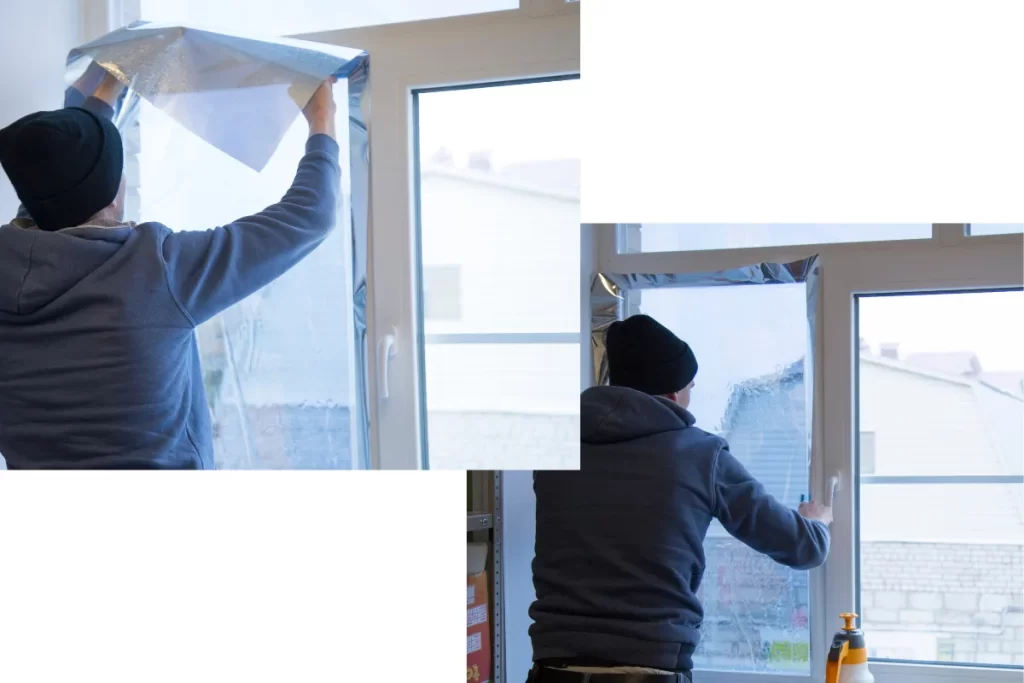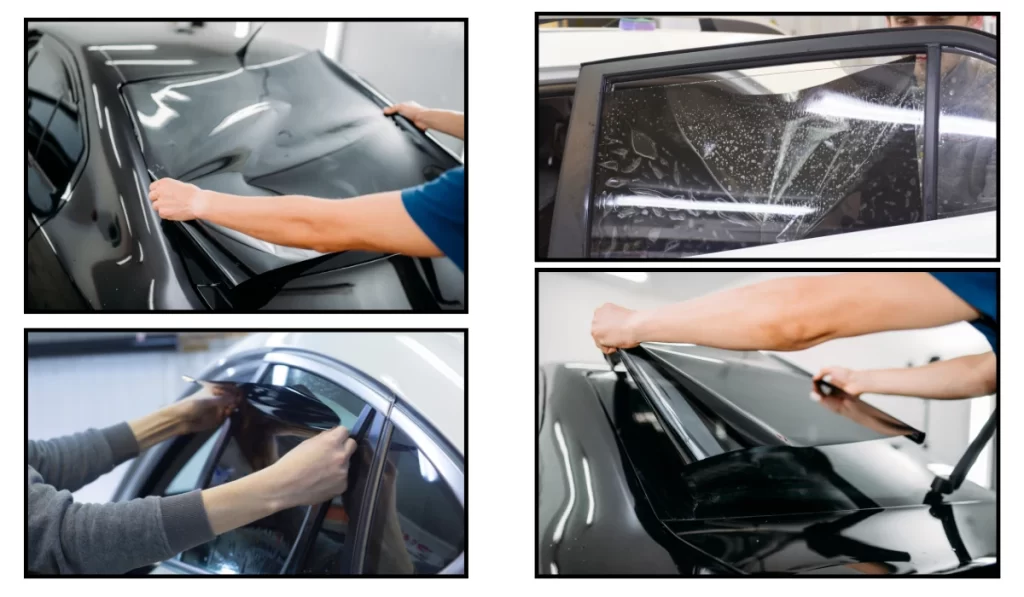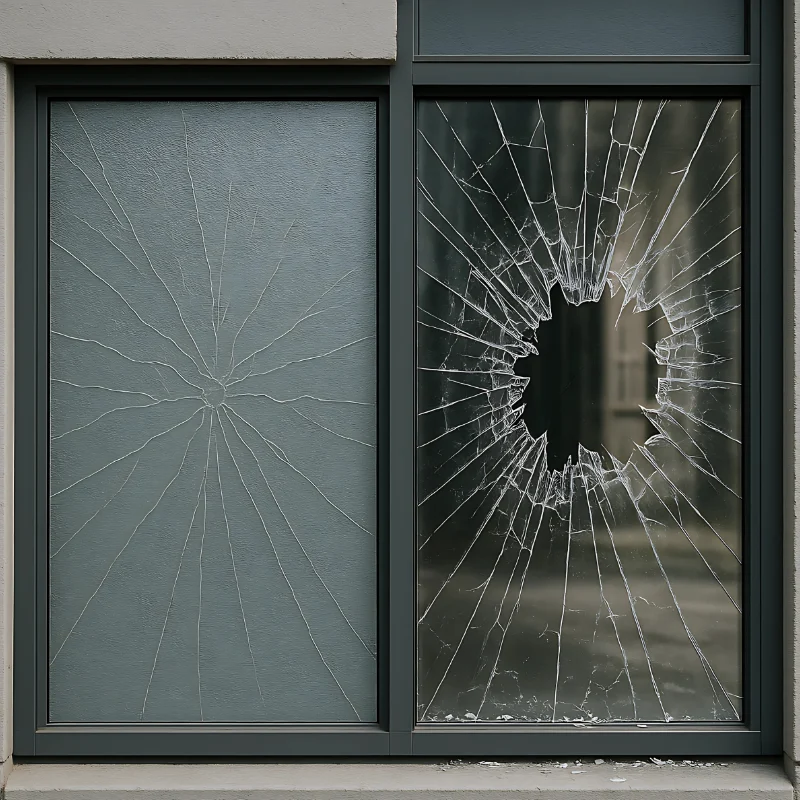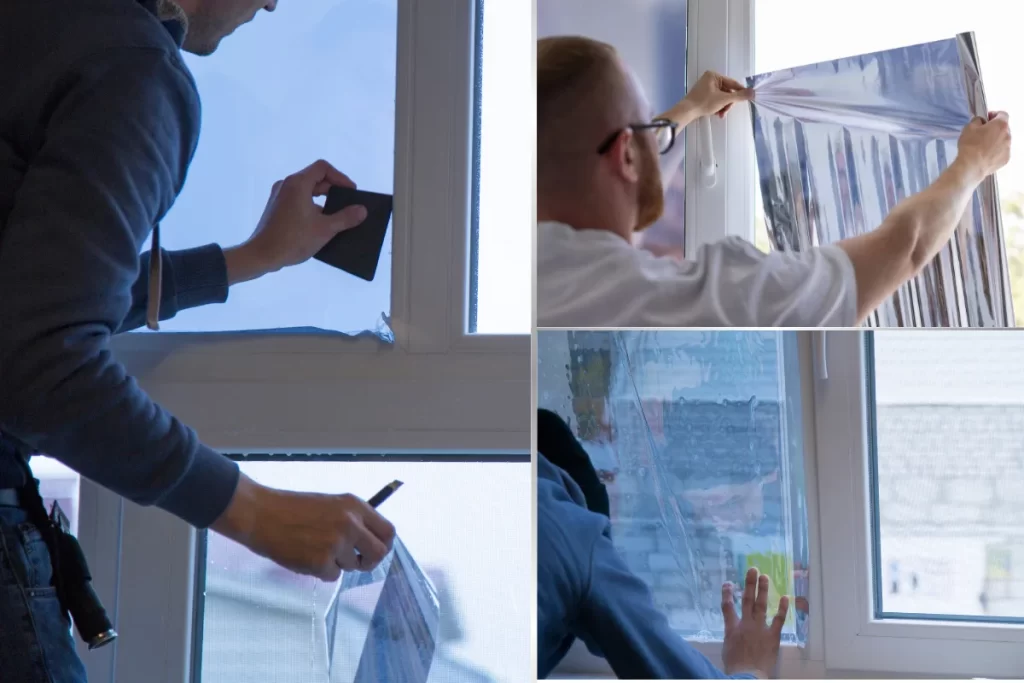Introduction
People apply window film, a thin, multifield layer of polyester, to glass surfaces for privacy, heat reduction, UV ray blocking, and aesthetic enhancement. Window tint provides anticlimactic expenses to modern lifestyle requirements when parking in cars, concerned about homes, or office buildings.
Demand for Cooling Sheets has surged recently due to rising temperatures, energy-saving issues, and UV considerations.
Well, this blog will answer all your questions about sun control film: what it is, how it works, its benefits for different usages, basic differences between terms like tint, solar films, and cooling sheets, costs, installation tips, and more. Whether a vehicle owner, homeowner, or building manager, this will help you make an informed decision.

Window Film Benefits and Its Application
You apply a thin and transparent or tinted polyester sheet to glass surfaces to modify their performance. People use Window Tint to reduce heat, block UV rays, allow for privacy, or improve aesthetics on the windows of cars, homes, and commercial buildings.
Cooling Sheets comprise several layers: Primarily, the adhesive layer sticks the film to the glass, then there is the polyester layer that provides strength, and a scratch-resistant surface layer that allows for durability. Oftentimes, however, a UV-blocking layer may filter harmful ultraviolet rays that cause skin damage and fading of interiors.
Window Tint comes in various types based on their composition and purpose:
- Dyed films use a coloured layer to absorb solar energy and reduce glare, making them cost-effective but less durable.
- Metallic (or metalized) films contain thin layers of metal particles that reflect heat and add a shiny, mirrored look. However, they may interfere with electronic signals.
- Ceramic films are high-end, non-metallic options that block heat and UV rays without signal interference. They offer excellent clarity and longevity.
By modifying the light and heat entering through glass, Window Tint enhances comfort, energy efficiency, and protection, making it a smart upgrade for any glass surface.
Types of Window Film Based on Application
1. Car Window Film

Car Cooling Sheets are thought to provide comfort, protection for interiors, and styling. Filter out almost 99% UV rays, heat, and glare, preferring to operate. High-end films, such as ceramic window tint, also block infrared radiation and make sure that the interiors stay cool without much darkening of the glass.
Therefore, Glass Film offers an added layer of privacy and security, making it difficult for someone on the outside to get in. But, each and every country or state has its own law regarding how dark car films can be- VLT (Visible Light Transmission), so always check the law before applying one.
✅ 2. Residential Window Film
Window films are installed by homeowners to lessen electricity bills and to protect furniture from sun damage. Heat and UV rays are reflected by solar control films. In contrast, decorative films permit aesthetics and privacy in the bathroom, kitchen, or living spaces. Some films also serve as reinforcement to glass, rendering it more shatter-resistant in the event of breakage.
✅ 3. Commercial & Office Window Film
In offices and commercial establishments, sun control film is used for maintaining temperature and employee comfort. Frost and tinted type films also permit branding while preserving the bright and open feel of the glass-partitioned interiors. Security films prevent injuries from broken glass caused by an impact or a calamity.
Sun Control Film, Solar Film, Cooling Sheet: What’s the Difference?
People often confuse different types of glass films. Here’s how they differ:
| Type | Purpose | Used For |
| Window Film | General term for any glass film | Cars, homes, offices |
| Window Tint | Cars, homes, and offices | Automotive use |
| Sun Control Film | Reflects heat and blocks UV rays | Residential and commercial |
| Solar Glass Film | High-performance heat rejection | Offices, luxury buildings |
| Cooling Sheet | Budget DIY heat blockers | Windows in homes (short-term use) |
Is Window Film Installed Inside or Outside?
Window films, for the most part, have been designed to be installed on the inside, as films placed on the outside suffer from degradation due to weathering and thus lose durability. The most important benefits of window film are its long-lasting performance when properly installed on interior surfaces. However, external-grade treatment films do exist for glass surfaces that are not accessible from the inside or that require treatment on the outside, like skylights.
Benefits of Window Film (All Use Cases)

Window film for vehicles greatly improves the driving experience by reducing the heat that builds up inside the cabin. Window film rejects a significant amount of solar energy, keeping the cabin cooler for passengers during hot summer months. Additionally, window film filters up to 99% of harmful UV rays, protecting passengers from skin damage as well as protecting the vehicle’s interior (dashboard and seat, and upholstery) from fading or cracking because of UV exposure over time.
For homes, window film provides comfort and savings. Window film keeps indoor temperatures at a comfortable level by reflecting heat coming with the sun during the summer and locking in heat during the winter. This helps with cooling and heating loads, thus reducing utility bills. Window film also helps protect furniture, flooring, and artwork from damaging UV rays.
Office space and commercial buildings also receive benefits from window film, in that it creates a more comfortable and productive area for employees and customers. Large sections of glass make excessive heat and glare problematic in open workspaces. Window film absorbs and reflects heat, helping maintain consistent temperatures across the office. All of these benefits help reduce HVAC loads and thus improve energy performance.
Installation: DIY vs Professional
Applying Tint Film can be an excellent DIY option for those with a set of basic tools and a little patience; it is available to DIY applicants and it is inexpensive, however, if the application is incorrect, you could end up with bubbles, creases, or the film slowly peeling away. If you are applying to your automotive vehicle or commercial property, your level of precision with measuring the window, the cleanliness, obviously the skill level of the installer, all measure into the appearance, durability, and longevity of your film.
You can ensure the film is applied evenly and there will be no blemishes if you choose a professional installation. This ensures better performance, durability, and longevity of the film once applied. Certified Cooling sheet Installation companies offer warranties and will assist in sorting out your needs and all the right requirements. Professional installations are more expensive but usually save you time, create less or no waste, and let you mount better film over time.
If your intention is to install the proper film for a clean and professional appearance while still getting the best protection, especially on professional and more complex vehicles, or glass in general, then a professional installer is the smart solution.
Maintenance and Durability Tips

To keep your window film looking great, we recommend cleaning it after 7 days from installation, so it can complete its proper curing period. When you’re ready to clean, use a soft microfiber cloth (which has very fine fibers, and you should avoid scratching or damaging the film) and use ammonia-free glass cleaners. Avoid scrubby pads, razor blades, and anything abrasive that can scratch or peel the film or the adhesive.. The durability of Solar Glass Film depends on several factors, including climate, sun exposure, type of film, etc. If you took care to choose a high-performing Sun Control Film like a ceramic or metalized film, it will last anywhere from 5 to 15 years.
If you want your film to keep its appearance and performance over the years, be mindful of the elements for long-term protection. For your vehicle, consider indoor parking. Close curtains or blinds if your home windows are constantly exposed to sunlight. These tips will help you to avoid premature issues, keeping it aesthetically pleasing and functioning.
Conclusion
Solar Glass Film effectively controls heat gain, privacy, and decor in homes, offices, and cars. Whether you are using ceramic films for their superior performance, or decorative films for a more aesthetic look, make sure you are aware of what you need and any regulations in yet area. If you want the best results, use products from a trusted brand like 3M, or UCFilms, and hire a professional installer.
Most Asked Questions About Window Film
Q1. Is window film removable?
Yes, you can remove it using a heat gun or steamer and an adhesive remover.
Q2. Can I apply it myself?
Yes, for small windows. For cars or large glass panels, professional help is best.
Q3. Does window film block Wi-Fi or mobile signals?
Only metallic films might interfere. Ceramic films do not block signals.
Q4. Is it legal to use dark window film on cars?
Laws vary by region. In India, for example, visible light transmission (VLT) rules apply (70% front, 50% rear). Check local laws before applying.
Q5. What is VLT?
Visible Light Transmission — the percentage of light that passes through the film.
Q6. How effective is window film against heat?
Very. Premium films can block up to 80% of solar heat and reduce indoor temperatures.
Q7. Does it work on double-glazed or tinted glass?
Yes, but choose compatible films to prevent thermal breakage.
